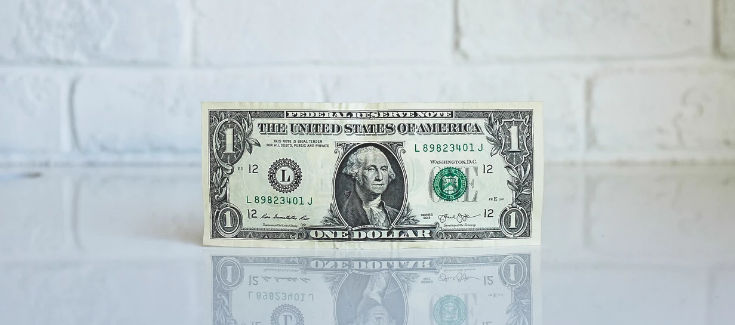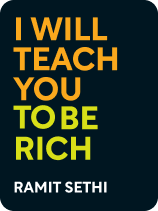

This article is an excerpt from the Shortform book guide to "I Will Teach You to Be Rich" by Ramit Sethi. Shortform has the world's best summaries and analyses of books you should be reading.
Like this article? Sign up for a free trial here .
Is your credit card debt getting out of hand? Do you want to finally start paying it off but don’t know to go about it?
Getting out of credit card debt not only feels good emotionally, but it also boosts your credit score and can save you thousands of dollars in interest. Instead of thinking of debt as a looming monster you’ll have to deal with “someday,” think about how much money you’re losing every day by carrying a balance that’s racking up interest.
In this article, you’ll learn how to get out of credit card debt in five steps.
Invisible Scripts: Why People Get Into Debt in the First Place
Most people have at least some debt, whether from credit cards, student loans, or a mortgage. Although we think of it as “normal,” debt can be a crushing weight, both financially and emotionally. Those emotions are so overwhelming that we freeze up and avoid thinking about debt at all costs instead of actively working to pay it down.
To justify ignoring the problem, we fall back on a host of invisible money scripts. This is a term coined by financial psychologist Dr. Brad Klontz to describe the unconscious beliefs we absorb in childhood about money and debt that end up influencing our financial behavior as adults. Here are the types of invisible scripts people have around credit card debt and what they sound like in practice:
- Comparing ourselves to others. “Everyone has credit card debt. At least I don’t have as much as my friends do.”
- Using the size of the problem as an excuse not to try at all. “It doesn’t matter how much I spend now—I have so much debt that I’ll never be able to pay it off, anyway.”
- Normalizing the problem. “I already pay other fees, so I don’t mind paying interest.”
- Not taking personal responsibility. “Credit card companies are predatory. It’s their fault that I’m in debt.”
- Ignoring the problem. “I don’t even know how much debt I have.”
- Giving in to hopelessness. “I’m doing my best.”
When we rely on these invisible scripts, we give up the power to do something about debt. Becoming aware of these scripts is the first step to taking that power back; the next step is taking responsibility for the problem and the solution. Once you accept that you can do something about the problem, you can make a plan to attack your debt as aggressively as possible. Having a plan turns a scary, overwhelming, emotional topic like debt into a simple, manageable math problem.
How to Pay off Credit Card Debt
Imagine you have $5,000 in credit card debt at 14% APR. You could approach this in a few different ways.
- You could pay only the monthly minimum (usually 2% of your balance). In this case, your first payment would be $100 (2% of $5,000). However, because the payment is a percentage of the balance, it will decrease as your balance decreases (so when your balance gets down to $4,000, your payment will go down to $80 per month). With this strategy, you’re making smaller and smaller payments each month, which stretches out the repayment period for years.
- Alternatively, you could pay a fixed amount each month—let’s say $100. This starts out the same as the situation above, but because it’s a fixed amount and not a variable percentage, you’re paying the balance down more aggressively as time goes on, not less. At the start, you’ll pay $100, which is 2% of your $5,000 balance; when your balance gets down to $4,000, you’ll still pay $100, which is now 2.5% of the balance. By the time your balance is $1,000, your fixed payments will be a full 10% of the balance.
To see how much time and interest money you’d save by paying more than the monthly minimum on that $5,000 debt at 14% APR, look at the chart below. Notice how doubling your fixed monthly payment from $100 to $200 would save you roughly four years of payments and $1,600 in interest.
| Monthly payment | Years to fully pay off | Total interest paid |
| $100 (variable monthly minimum) | 25 years | $6,322.22 |
| $100 (fixed payment) | 6.3 years | $2,547.85 |
| $200 (fixed payment) | 2.5 years | $946.20 |
Five Steps to Paying Off Debt
It’s time to get proactive about paying off debt. This process can take time, but with every payment, you’ll have the satisfaction of knowing you’re actually doing something about your debt. Remember, little steps can add up to big financial wins.
Without further ado, here is how to get out of credit card debt in a five steps:
Step 1: Total up your debt. Many people have no idea how much debt they actually have, which makes it impossible to make a solid plan (because the process of paying off $1,000 of debt might look a lot different than paying off $12,000). To get a sense of your current situation, call your credit card companies using the phone number on the back of your cards and find out your total debt, the APR, and current minimum monthly payment. Keep track of all the information using a chart like this one:
| Card name | Total debt | APR | Minimum payment |
| Card 1 | $1000 | 14% | $20 |
| Card 2 | $2000 | 18% | $40 |
Step Two: Decide where to start. You’ll want to focus on fully paying off one card at a time instead of increasing your payments on all of them. You can do this in two ways:
- Start with the highest APR (in the chart above, that’s Card 2). This is the most financially efficient way to pay off debt because the card with the highest APR is costing you the most in interest for each month you stay in debt.
- Start with the lowest balance (in the chart above, that’s Card 1). This is financial guru Dave Ramsey’s “snowball method.” It’s slightly less efficient in terms of pure financial math, but it has the psychological advantage: If you start with the lowest balance, you should be able to pay it off pretty quickly, and paying off an entire card’s debt is a huge win that will motivate you to keep going.
These are both solid options for paying off debt, so don’t get hung up on choosing where to start—pick one, commit to it, and move on. Remember, getting started on paying off debt is more important than doing it perfectly.
Step 3: Negotiate a lower APR. This is something everyone should be doing, whether or not they have credit card debt. Remember, the key is to let the credit card representative know that other cards are offering lower APRs, and you’d hate to have to transfer your balance to another company with a better interest rate. Credit card companies want to keep your business—use this to your advantage.
Step 4: Figure out how you can afford more aggressive monthly payments. You don’t necessarily need to bring in more money every month, you just need to reprioritize and divert money that you’re already spending elsewhere into your debt. Take a look at your spending habits—where can you afford to cut costs? If you’re not sure, keep that question in mind as you read the rest of this summary—you’ll find tips for saving money that you can use toward paying down your debts. Remember, the financial and emotional benefits of paying off debt will be worth any temporary sacrifices you make.
- There are other, less effective ways to fund your debt payoff—namely, balance transfers (essentially, using a credit card with a lower APR to pay off the current debt on a card with a higher APR) and taking money from your 401(k) or home equity line of credit (HELOC). Sethi cautions against these methods because they don’t address the root problem of your spending behavior. Instead, focus on building good financial habits by reducing spending and prioritizing building credit by getting out of debt.
Step 5: Get started. Remember that it’s better to get started on a plan that’s good enough than to spin your wheels trying to come up with a plan that’s 100% perfect.

———End of Preview———
Like what you just read? Read the rest of the world's best book summary and analysis of Ramit Sethi's "I Will Teach You to Be Rich" at Shortform .
Here's what you'll find in our full I Will Teach You to Be Rich summary :
- The small steps you can take towards living a "rich life"
- How to choose the right bank account and manage your credit cards
- How to create a financial system that grows your money automatically






